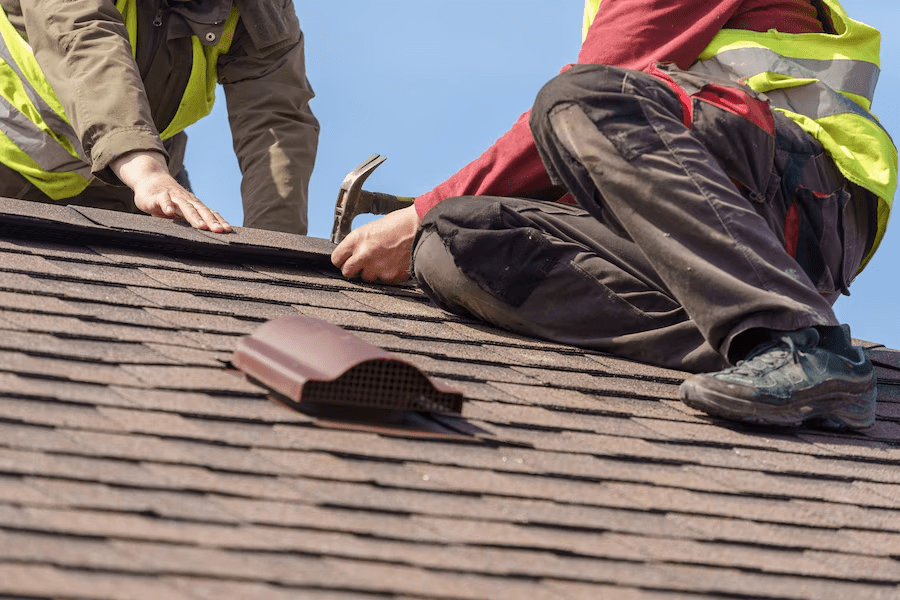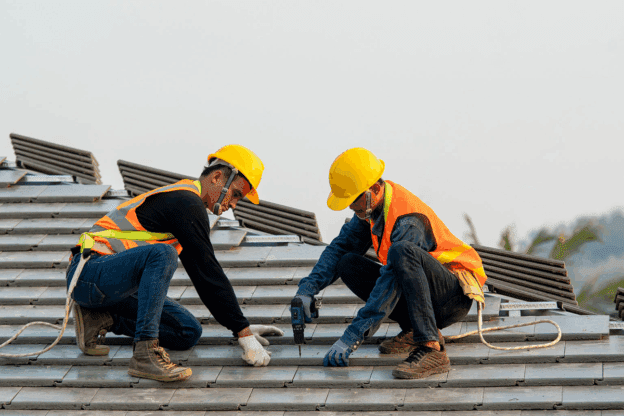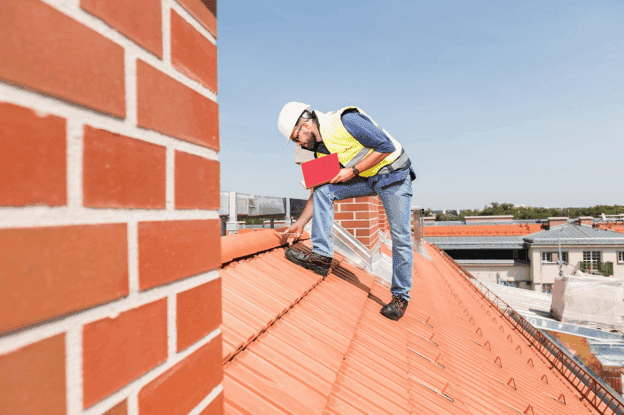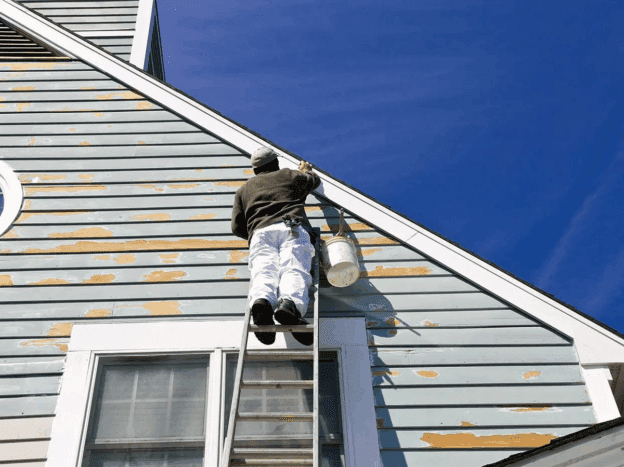
How to Handle Emergency Roof Repairs Quickly and Efficiently
When a roof emergency strikes, quick and efficient action can make all the difference. Roof repair isn’t just about fixing leaks; it’s about preventing further damage and protecting the integrity of your home. Whether it’s a sudden storm or unexpected wear and tear, knowing the right steps to take can save time, money, and stress. Addressing roof issues promptly involves assessing the damage, securing temporary fixes, and contacting a professional for a permanent solution. By acting swiftly, you not only safeguard your property but also ensure that minor problems don’t escalate into major headaches.
Immediate Actions for Emergency Roof Repair
When a roofing emergency arises, acting quickly is crucial to minimising damage. Start by safely accessing the area use a sturdy ladder and, if possible, wear a safety harness. Identify the source of the problem, such as a hole or loose shingles. If water is leaking, place buckets or containers to catch the dripping and prevent interior damage. Turn off electrical systems in affected areas to avoid electrical hazards.
If the damage is severe, such as a large hole or structural compromise, consider covering the area with a waterproof tarp or plastic sheeting. This temporary measure will provide immediate protection until a professional can assess and repair the damage. Quick action helps prevent further issues and reduces the risk of more extensive repairs later on.
Assessing Damage and Prioritising Repairs
Once immediate safety measures are in place, it’s time to assess the damage to your roof. Start by inspecting the affected areas carefully to understand the extent of the problem. Look for missing or damaged shingles, cracks, or leaks. Assess whether the damage is isolated to a small section or if it affects a larger area.
Prioritise repairs based on severity—address the most critical issues first, such as leaks that could cause interior damage. If you’re unsure about the extent of the damage, it’s wise to consult a roofing professional who can provide a thorough inspection and recommend appropriate repairs.
Essential Tools for Fast Roof Fixes
When tackling emergency roof repairs, having the right tools at your disposal ensures a quicker, more effective fix. Essential tools for fast roof fixes streamline the repair process and enhance safety.
- Ladder: A sturdy ladder is crucial for safe and reliable access to the roof. Ensure it’s stable and properly positioned to avoid accidents while working at height.
- Utility Knife: This tool is essential for cutting roofing materials with precision. A sharp utility knife allows for clean cuts, which are vital for properly fitting and sealing repairs.
- Roofing Tar: Used for sealing small leaks and cracks, roofing tar provides a temporary barrier against water infiltration. Apply it generously to cover damaged areas and prevent further leaks.
- Tarp or Plastic Sheeting: Protect exposed areas from the elements by covering them with a tarp or heavy-duty plastic. Secure the covering to keep water and debris out until a permanent repair can be made.
- Roofing Nails and Hammer: These are necessary for securing new shingles or patches. Use roofing nails that are specifically designed for outdoor use to ensure a secure and weather-resistant repair.
Having these tools on hand makes addressing roof issues more manageable and ensures repairs are performed efficiently and safely.
Temporary Solutions to Prevent Further Damage
While waiting for professional help, implementing temporary solutions can prevent further damage to your home. Start by covering any exposed areas with a waterproof tarp or plastic sheeting to shield them from rain and wind. Secure the covering with heavy objects or duct tape to ensure it stays in place. If you have small leaks, applying roofing tar or sealant can provide a temporary barrier against water infiltration.
For damaged shingles, use roofing nails to fasten them temporarily. These measures won’t fix the problem permanently but will help protect your home from additional damage until a thorough repair can be completed. Taking these precautions helps to minimise the risk of worsening the situation and ensures that your home remains as protected as possible.
Choosing the Right Professional for Repairs
Selecting the right professional for roof repairs is essential to ensure quality work and peace of mind. Start by researching local roofing contractors and checking their credentials. Look for licensed and insured professionals with a solid reputation in the industry. Reading reviews and asking for recommendations from friends or family can provide valuable insights.
It’s also a good idea to obtain multiple quotes and compare them to understand the cost and scope of the repairs. Ensure that the contractor provides a detailed written estimate and a clear timeline for the work. Choosing a reputable professional ensures that repairs are carried out correctly and efficiently, preventing future issues and safeguarding the longevity of your roof.
How Weather Conditions Affect Roof Repairs
Weather conditions significantly influence the effectiveness and timing of roof repairs. Understanding these impacts helps in planning and executing repairs efficiently, ensuring durability and preventing further damage.
- Rain: Wet conditions can delay repairs and affect the adhesion of roofing materials. Temporary coverings are crucial to prevent additional water damage while waiting for better weather.
- Snow and Ice: Cold weather can cause roofing materials to become brittle, making repairs challenging. Snow and ice also increase the risk of accidents, so work should be scheduled when conditions improve.
- High Winds: Strong winds can complicate repair efforts, potentially causing debris to scatter and making the roof unstable. Safety measures should be taken to secure tools and materials.
- Extreme Heat: High temperatures can cause roofing materials to expand and become soft, which may affect their effectiveness. Repair work should be done during cooler parts of the day to ensure proper application.
- Humidity: High humidity levels can lead to issues with drying and curing of roofing materials. It’s essential to monitor weather forecasts and plan repairs when humidity is lower.
Proper planning and awareness of these factors ensure repairs are performed effectively and safely, preserving the integrity of your home.
Cost Considerations for Urgent Roof Repairs
The cost of emergency roof repairs can vary widely depending on the extent of the damage and the materials needed. Immediate fixes, such as temporary coverings or small repairs, are generally less expensive than extensive repairs or replacements. However, delaying necessary repairs can lead to more significant damage and higher costs in the long run. It’s important to get a detailed estimate from a professional, including labour, materials, and any additional fees. Some insurance policies may cover emergency repairs, so checking with your provider can help manage costs.
Communicating Effectively with Repair Services
Effective communication with repair services is key to ensuring that your needs are met and the repairs are carried out correctly. Start by clearly explaining the nature and extent of the damage to the contractor. Provide any relevant details, such as when the damage occurred and any temporary measures you’ve taken. Discuss your expectations regarding the repair process, including timelines and costs. Make sure to ask questions about the repair methods, materials used, and any warranties offered.
Common Mistakes in Emergency Roof Repairs
Emergency roof repairs are often fraught with pitfalls that can lead to incomplete or ineffective fixes. One common mistake is neglecting to assess the full extent of the damage, leading to temporary solutions that don’t address underlying issues. Another error is using improper materials or methods that don’t hold up under adverse conditions.
Rushing repairs without proper safety measures can result in accidents or further damage. Avoiding these mistakes involves taking the time to thoroughly evaluate the situation, using appropriate materials, and seeking professional help to ensure that repairs are done correctly and safely.
Preventative Measures for Future Roof Issues
To safeguard your roof against future problems, implementing preventative measures is essential. Regular maintenance can significantly extend the life of your roof and prevent costly repairs down the line.
- Regular Inspections: Schedule annual roof inspections to identify and address issues early. Professional inspections help detect minor problems before they escalate, ensuring timely repairs and reducing long-term costs.
- Gutter Maintenance: Clean gutters and downspouts regularly to prevent blockages. Clogged gutters can cause water to back up, leading to roof damage and potential leaks.
- Tree Trimming: Keep overhanging branches trimmed to avoid damage from falling debris. Branches can scratch or puncture the roof, and removing them reduces the risk of such damage.
- Ventilation Checks: Ensure proper roof ventilation to prevent moisture build-up. Good ventilation helps to regulate temperature and moisture levels, which can prevent mould and deterioration.
- Prompt Repairs: Address minor repairs as soon as they are identified. Timely fixes prevent small issues from developing into major problems, helping to maintain roof integrity and longevity.
Taking these steps ensures that your roof remains in optimal condition and minimises the need for emergency repairs.
Handling emergency roof repairs swiftly and effectively is crucial to protecting your home from further damage. By acting quickly, assessing the damage thoroughly, and employing temporary fixes, immediate problems can be managed until professional help arrives. Choosing the right tools and understanding how weather affects repairs ensures a more efficient process. Furthermore, selecting a reputable contractor and being aware of cost considerations helps in managing the repair effectively.
For expert guidance and reliable service, turn to Tidal Remodeling. Don’t wait until minor issues become major problems. Contact Tidal Remodeling today at +1 (760) 990-7890 for expert assistance with all your emergency roof repair needs.



